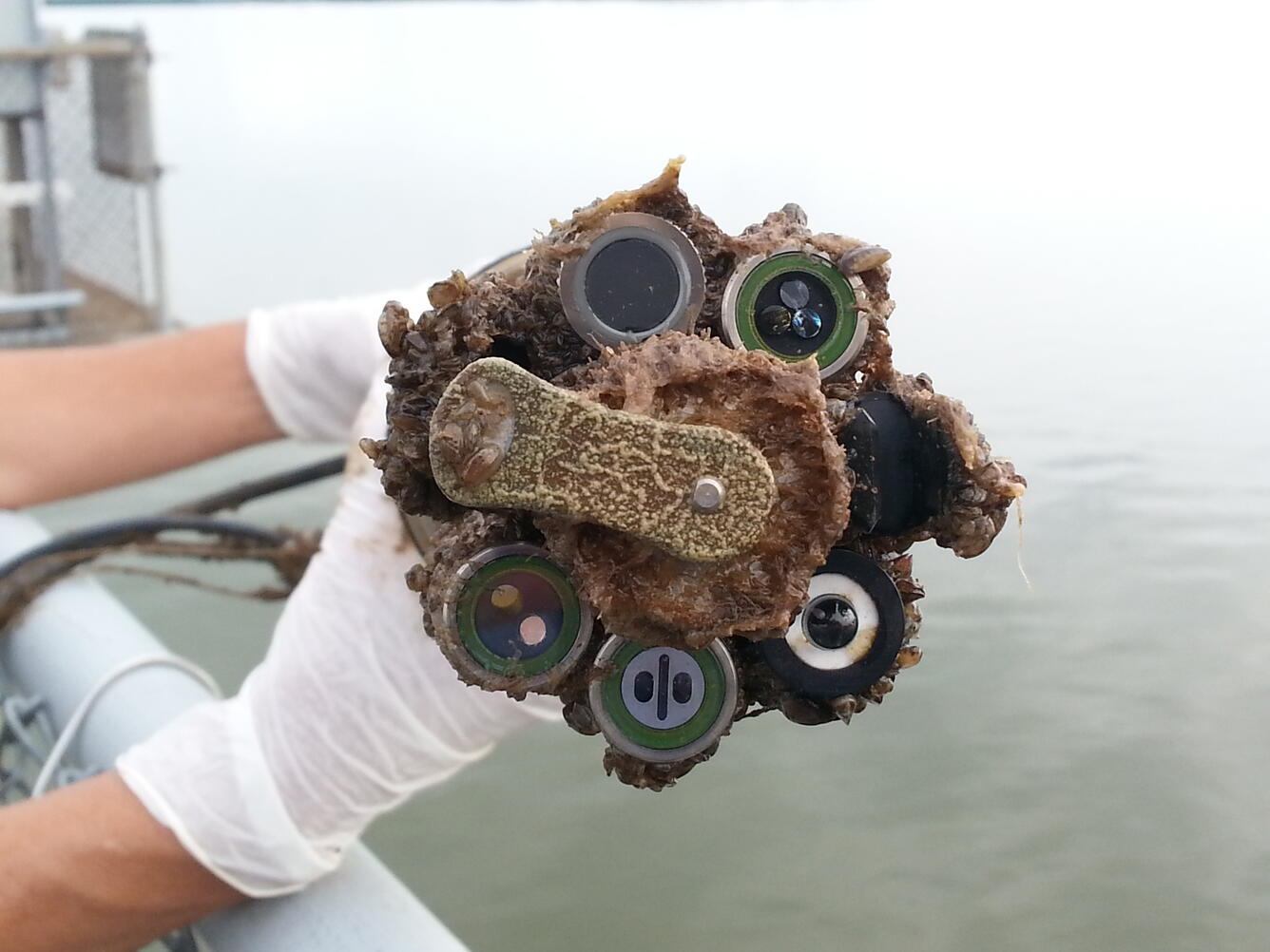Long-term analysis may assist with management across the globe
Two decades of harmful algal bloom, nutrient and sediment research by the U.S. Geological Survey is helping to support Wichita’s long-term vision of a sustainable water supply into the future. Early warning indicators of harmful algal blooms have been developed for Cheney Reservoir, Kansas, according to a new USGS publication done in cooperation with the City of Wichita, Kansas.
Cheney Reservoir, located in south-central Kansas, is one of the primary drinking-water supplies for the city of Wichita and an important recreational resource. Because of population growth, urban development and water-supply needs, the city of Wichita will continue to rely on Cheney Reservoir as a drinking-water supply for the foreseeable future. Since 1990, harmful algal blooms have been present occasionally in Cheney Reservoir, resulting in increased treatment costs and decreased recreational use. Findings from long-term research may help resource managers make informed decisions regarding algal bloom occurrences in Wichita and across the globe.
Since 1996, the USGS, in cooperation with the City of Wichita, has conducted studies in the Cheney Reservoir Watershed to understand environmental effects on water-quality conditions. In 2001, the USGS started to continuously measure water-quality conditions to develop a real-time notification system of factors that may affect drinking-water treatment. Scientists created tools that serve as early warning indicators of event occurrence in near real-time. These products, which include predictive models, allow for a more proactive approach to managing harmful algal blooms. A new USGS fact sheet is also available that summarizes two decades of work.
“Knowledge gained from USGS studies in the Cheney Reservoir Watershed has assisted in the development, implementation, maintenance, and assessment of watershed-management goals and plans,” said Don Henry, assistant director of the City of Wichita’s Public Works and Utilities. “This data has allowed us to ensure a safe and reliable water supply and put us ahead of the curve in terms of sediment management.”
Freshwater harmful algal blooms may contain toxins which have been implicated in human and animal illness and death in at least 43 states in the U.S., including Kansas. Many of these states have established monitoring programs to minimize potential exposure through recreational activities. Several countries, including the United States have set national standards or guidelines for these toxins in drinking water.
“Long-term data have been critical in improving our understanding of how to prevent and mitigate harmful algal bloom outbreaks,” said Jennifer Graham, USGS scientist and lead author of the new USGS study. “This information is not only important to the City of Wichita, but can help water managers around the globe make informed decisions on resources.”
Water-quality concerns can arise with the presence of harmful algal blooms, including the potential to produce toxins and taste-and-odor compounds. Toxins and taste-and-odor compounds may cause substantial economic and public health concerns and are of particular interest in lakes, reservoirs, and rivers that are used for drinking-water supply and recreation.
Additional USGS resources on harmful algal blooms are available in this recent USGS featured story.








